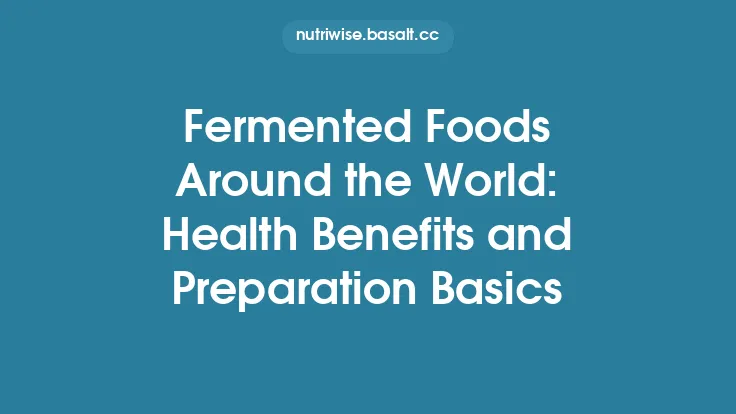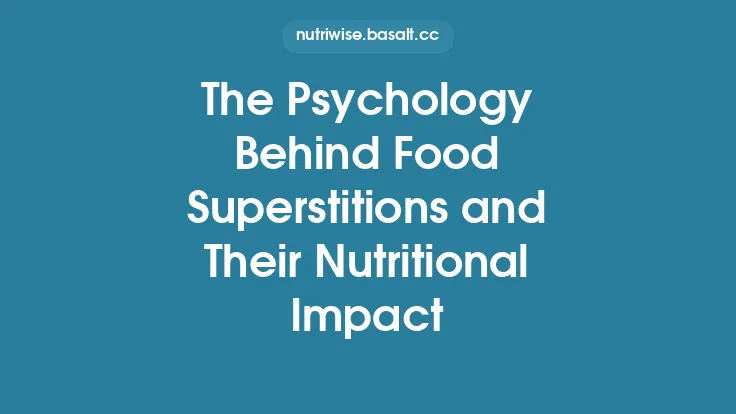Food has always been more than sustenance; it is a living archive of who we are, where we come from, and what we hold dear. Across centuries and continents, the dishes we prepare, the ingredients we cherish, and the ways we share meals have acted as tangible expressions of collective belief systems and personal identity. By examining the layers of meaning woven into culinary practices, we can trace the timeless threads that bind food, identity, and belief—threads that persist even as societies evolve and borders shift.
Food as a Mirror of Cultural Identity
Every culture possesses a culinary fingerprint—an assemblage of flavors, techniques, and rituals that instantly signals belonging. This fingerprint is forged through geography, climate, and historical encounters, but it is the conscious choice to preserve and celebrate these elements that turns food into a marker of identity.
- Regional Signatures – In the highlands of Ethiopia, injera’s sourdough base reflects the staple grain teff, a crop uniquely adapted to the region’s altitude. In contrast, the rice‑centric cuisines of Southeast Asia echo the abundance of lowland paddies. When a community continues to prepare these dishes, it reaffirms its connection to the land that shaped them.
- Language of Ingredients – Certain ingredients become linguistic signifiers. The use of corn in Mexican cuisine, for instance, is not merely a matter of taste; it invokes the ancient Mesoamerican concept of *milpa*—the sacred triad of corn, beans, and squash that embodies balance and reciprocity. Mentioning “corn” in a Mexican context instantly conjures a shared cultural narrative.
- Culinary Dress Codes – Dress and tableware also encode identity. The Japanese tea ceremony’s precise use of bamboo, lacquer, and ceramic vessels communicates a reverence for *wabi‑sabi*—the aesthetic of imperfection and transience. By adhering to these material conventions, participants affirm their alignment with a broader philosophical tradition.
Through these layers, food operates as a living emblem, allowing individuals to signal affiliation, pride, and continuity with their cultural heritage.
Rituals and Belief Systems Embedded in Food Practices
Rituals surrounding food are often the most visible expressions of underlying belief systems. While some rituals are overtly religious, many are secular yet deeply symbolic, reflecting communal values and cosmologies.
- Rites of Passage – In many societies, specific foods mark life transitions. The Greek tradition of serving *koulourakia (butter cookies) at a child’s baptism symbolizes the sweetness of new spiritual beginnings, while the Irish custom of offering colcannon* (mashed potatoes with kale) to newlyweds represents prosperity and the blending of families.
- Seasonal Cycles – Harvest festivals such as the Korean *Chuseok or the Mexican Día de los Muertos* incorporate seasonal produce to honor the cyclical relationship between humans and nature. The act of sharing these foods reinforces a collective belief in the interdependence of community and environment.
- Communal Preparation – The communal kneading of dough for *pão de queijo in Brazilian households or the collective grilling of barbecue in South African braais* transforms cooking into a social rite. The shared labor embodies a belief in cooperation, hospitality, and the creation of social bonds through collective effort.
These rituals, while varied in form, share a common purpose: they translate abstract belief systems into concrete, repeatable actions that reinforce communal cohesion.
Narratives of Origin: Myths, Legends, and Culinary Heritage
Stories about the origins of particular dishes or ingredients serve as cultural touchstones, linking present practices to mythic pasts. These narratives often encode moral lessons, cosmological views, or historical memory.
- Foundational Myths – The legend of the *pomegranate* in Persian mythology tells of a fruit that fell from the heavens, symbolizing fertility and renewal. Its inclusion in celebratory dishes during Nowruz (Persian New Year) connects participants to a mythic narrative of rebirth.
- Heroic Tales – In West Africa, the tale of *fufu*—a dough made from boiled and pounded starchy vegetables—attributes its invention to a clever ancestor who transformed a failed harvest into a staple, embodying resilience and ingenuity. The story is retold during communal meals, reinforcing a collective identity rooted in adaptability.
- Historical Commemoration – The Japanese dish *okonomiyaki* (a savory pancake) is said to have emerged during the post‑World War II period as a pragmatic response to food scarcity. Its name, meaning “what you like,” reflects a belief in personal agency and improvisation during hardship. The dish remains a culinary reminder of a pivotal historical moment.
These origin narratives embed food within a larger cultural storyline, allowing each bite to become a conduit for shared memory and belief.
Diaspora, Adaptation, and the Preservation of Identity through Food
When communities migrate, food becomes a portable cultural anchor. The ways in which diaspora groups adapt traditional recipes while preserving core elements reveal the dynamic tension between assimilation and identity maintenance.
- Ingredient Substitution – Caribbean immigrants in the United Kingdom often replace plantains with locally available sweet potatoes in *callaloo* soups. While the flavor profile shifts, the dish’s structural role as a communal, leafy stew remains intact, preserving its symbolic function.
- Hybrid Creations – The emergence of *sushi burritos* among Japanese‑American youth illustrates how diaspora communities blend culinary forms to negotiate dual identities. The hybrid retains the rice and seaweed components of sushi—signifiers of Japanese heritage—while adopting the handheld convenience of a burrito, reflecting an American cultural influence.
- Culinary Gatherings as Cultural Hubs – In cities like Toronto, community centers host *potluck* nights where immigrants share dishes from their homelands. These gatherings serve as informal classrooms, where younger generations learn the stories and techniques behind each recipe, ensuring the transmission of belief‑laden culinary knowledge across generations.
Through adaptation, diaspora communities demonstrate that food can be both a steadfast emblem of origin and a flexible medium for cultural negotiation.
Social Stratification and Symbolic Boundaries in Culinary Practices
Food also delineates social hierarchies and demarcates group boundaries. The symbolic use of certain foods can signal status, profession, or group affiliation, reinforcing societal structures.
- Class Distinctions – Historically, the consumption of white meat (e.g., poultry, rabbit) versus red meat (e.g., beef, pork) in medieval Europe signified class differences, with the former associated with the aristocracy due to its perceived refinement and cost. Even today, the preference for certain cuts of meat can subtly indicate socioeconomic positioning.
- Professional Identity – In Japan, the *shokunin (artisan) tradition includes a specific set of foods—such as soba* noodles—served to craftsmen after a day’s work. The shared meal reinforces a collective professional identity and the belief in mastery through disciplined practice.
- Ethnic Markers – In multicultural societies, the choice to eat or avoid particular foods can serve as an ethnic boundary. For instance, the avoidance of pork among many Muslim and Jewish communities not only adheres to religious doctrine but also functions as a visible marker of communal belonging.
These symbolic boundaries illustrate how food operates as a social language, encoding and communicating hierarchical relationships and group affiliations.
Gender, Age, and the Symbolic Roles of Food
Across cultures, gender and age influence both the production and consumption of food, reflecting deeper belief systems about roles and responsibilities.
- Gendered Culinary Labor – In many South Asian households, the preparation of *biryani is traditionally a male‑dominated task, symbolizing the male role as the provider of celebratory feasts. Conversely, the daily preparation of dal and roti* is often assigned to women, reinforcing the belief in women as custodians of everyday nourishment.
- Age‑Related Food Privileges – In many African societies, elders are served the first portion of communal dishes, a practice rooted in the belief that elders embody wisdom and deserve honor. This ritual not only reinforces respect for age but also embeds the notion that nourishment is a conduit for transmitting cultural values.
- Ritualistic Gendered Foods – Certain rites involve gender‑specific foods, such as the serving of *kheer* (sweet rice pudding) to brides in Indian weddings, symbolizing fertility and sweetness in marital life. The act of preparing and presenting this dish underscores gendered expectations within the cultural belief system.
Understanding these gendered and age‑related food practices reveals how culinary customs reinforce and perpetuate societal norms and values.
The Semiotics of Food: Signs, Symbols, and Meaning‑Making
From a semiotic perspective, food functions as a system of signs that convey layered meanings. Analyzing these signs helps decode the belief structures embedded in everyday meals.
- Denotative vs. Connotative Layers – A simple loaf of bread denotes a baked mixture of flour, water, and yeast. Connotatively, however, it may symbolize hospitality, sustenance, or even spiritual communion (as in the Christian *bread of life* metaphor). The dual layers allow a single food item to carry multiple, context‑dependent messages.
- Iconic and Indexical Signifiers – The visual similarity between a *coconut and a head in certain Pacific Islander myths serves as an iconic sign, linking the fruit to concepts of protection and nourishment. Meanwhile, the presence of a salt shaker* at a banquet can function as an indexical sign of wealth, indicating the host’s ability to afford a luxury commodity historically scarce in the region.
- Mythic Archetypes – Certain foods embody archetypal roles—*the hero’s feast, the trickster’s snack, or the mother’s broth*. These archetypes recur across cultures, suggesting a universal cognitive pattern that ties food to narrative structures and belief systems.
By treating food as a semiotic system, we uncover how everyday meals become repositories of cultural meaning, capable of communicating complex belief structures without words.
Contemporary Reflections: Maintaining Timeless Connections in a Globalized World
In today’s hyper‑connected era, the forces of globalization, technology, and migration challenge traditional food‑identity linkages. Yet, the timeless connections between food, identity, and belief persist, adapting rather than disappearing.
- Digital Preservation – Online platforms allow diaspora families to share recipes, stories, and rituals in real time, ensuring that culinary knowledge is not lost to geographic dispersion. Video tutorials of traditional techniques, accompanied by oral histories, act as digital archives of belief‑laden food practices.
- Culinary Tourism as Cultural Dialogue – Travelers who engage in cooking workshops—such as learning to make *kimchi* in South Korea—participate in a form of cultural exchange that respects and reinforces the symbolic meanings attached to the food. This experiential learning helps sustain the original belief frameworks while fostering cross‑cultural appreciation.
- Revival Movements – In many urban centers, younger generations are spearheading movements to revive heirloom varieties and forgotten preparation methods (e.g., the resurgence of *teff* in Ethiopian diaspora communities). These revivals are motivated not only by culinary curiosity but also by a desire to reconnect with ancestral belief systems and assert cultural identity in a homogenizing world.
Through these contemporary pathways, the ancient bond between what we eat, who we are, and what we believe continues to thrive, demonstrating the resilience and adaptability of food as a cultural cornerstone.
In sum, food operates as a multidimensional conduit linking identity and belief across time and space. Whether through the subtle language of ingredients, the ritualized choreography of communal meals, the mythic narratives that surround beloved dishes, or the semiotic signs embedded in every bite, culinary practices encode the values, histories, and aspirations of the communities that create them. By recognizing and honoring these connections, we not only deepen our appreciation of the meals on our plates but also affirm the enduring human story that lives within them.





